

Andrew Maclean
Honda CR-V RS e:HEV vs Toyota RAV4 Edge Hybrid: Spec battle
14 Days Ago
The mid-spec Tucson Elite is arguably the value play of the range with turbo petrol power, but its spec shortcomings remain head-scratchers.
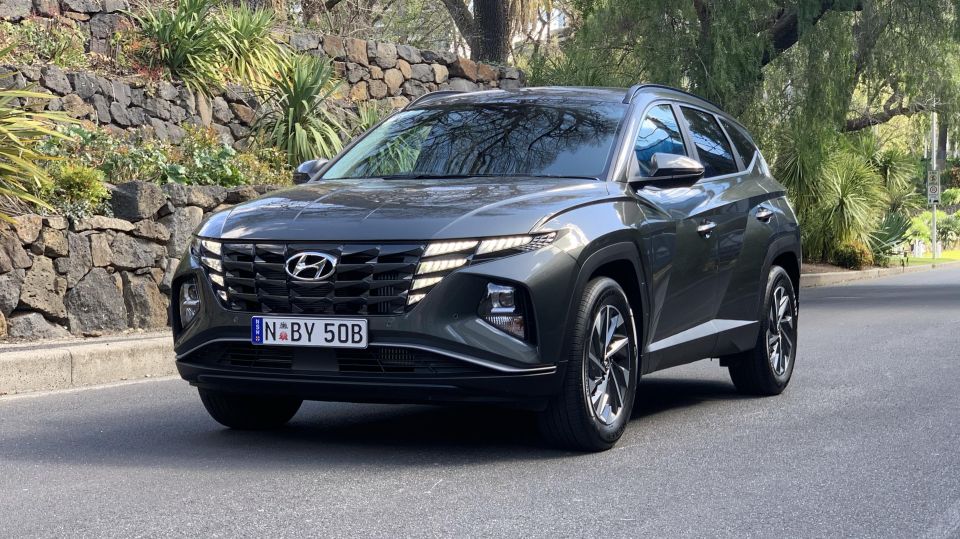
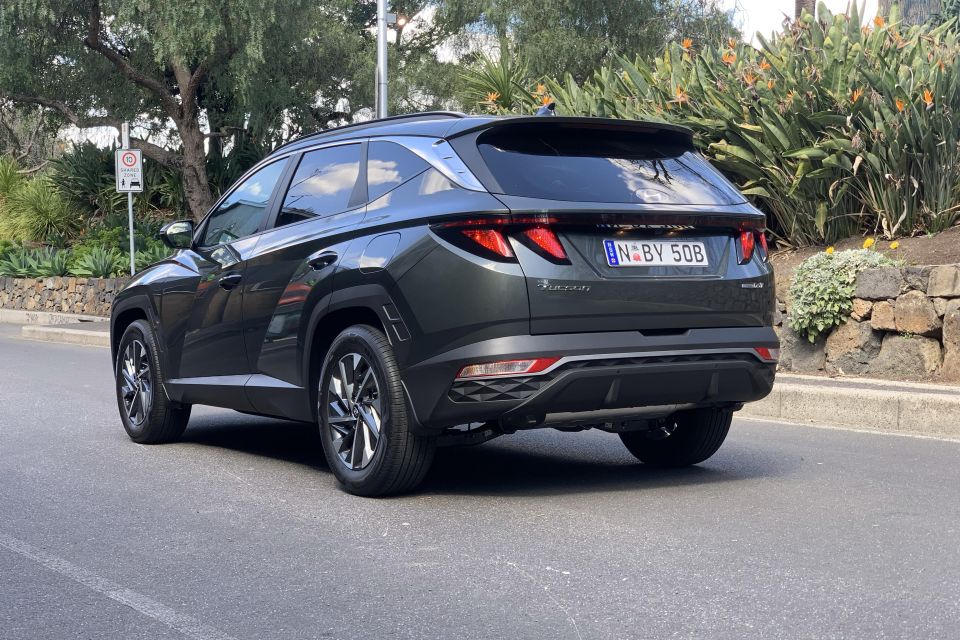

Marketplace Editor
New from
$32,140
excl. on-roads

Marketplace Editor
New from
$32,140
excl. on-roads


Marketplace Editor
New from
$32,140
excl. on-roads

Marketplace Editor
New from
$32,140
excl. on-roads
Quickly see how this car stacks up against its competition. Select any benchmark to see more details.
Where expert car reviews meet expert car buying – CarExpert gives you trusted advice, personalised service and real savings on your next new car.
The latest Hyundai Tucson has found favour with the CarExpert team, combining distinctive design with impressive practicality and high-end available infotainment and safety technologies.
Following the initial launch in May, where I tested the entry-level 2.0-litre petrol models, the 1.6-litre turbo petrol and 2.0-litre turbo-diesel versions have landed on Australian soil, bringing with them all-wheel drive.
Here on test is arguably the sweet spot of the range in terms of value and performance, at least on paper.

The 2022 Hyundai Tucson Elite 1.6T AWD is priced below $50,000 on the road and has a pretty lengthy list of standard inclusions, while also being the most affordable Tucson with turbo power and all-wheel drive.
It’s priced directly against the bulk of the competition, and the oily bits bring a level of performance a cut above the bulk of competitors persisting with naturally-aspirated engines.
But with an ever-changing landscape, and an all-new Kia Sportage twin around the corner, is the Tucson your best bet?
In Elite 1.6T AWD guise, the Tucson is priced from $43,000 before on-road costs, or just over $47,400 drive-away. Our test car’s Titan Grey premium paint adds a further $595 to the purchase price, bringing the as-tested ticket to a smidgen over $48,000 on the road.
The only option other than premium paint is the N Line package ($2000), which brings both cosmetic and equipment upgrades LED lighting all round, a 10.25-inch digital instrument cluster, and an N Line bodykit and interior trimmings.
The added kit included as part of the N Line pack would be enough for me to take the plunge, as the more premium ambience that comes with the N Line trimmings and digital driver’s display as well as the much-improved LED lighting (as opposed to the average halogens here) give the impression you’ve spent a lot more money.
Anyway, there’s a dizzying amount of choice in the Tucson range in an age where most manufacturers are simplifying model line-ups and option packages.
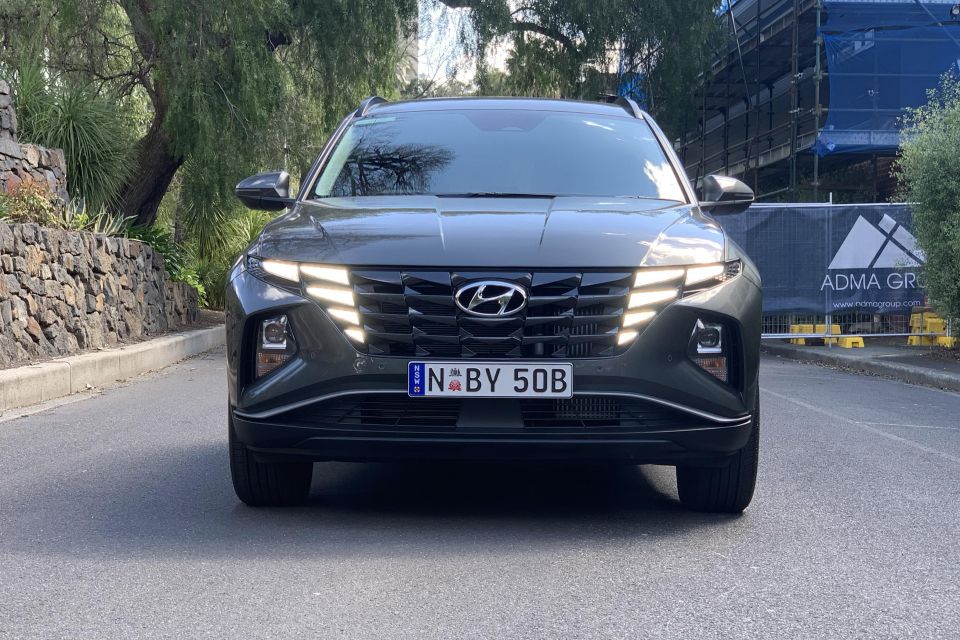
See the full price list below:
All prices exclude on-road costs
Given it competes in Australia’s biggest new vehicle segment, the Tucson is in no shortage of rivals regardless of the variant you choose.
Key competitors for the Tucson Elite 1.6T AWD include:
All prices exclude on-road costs unless specified (D/A)
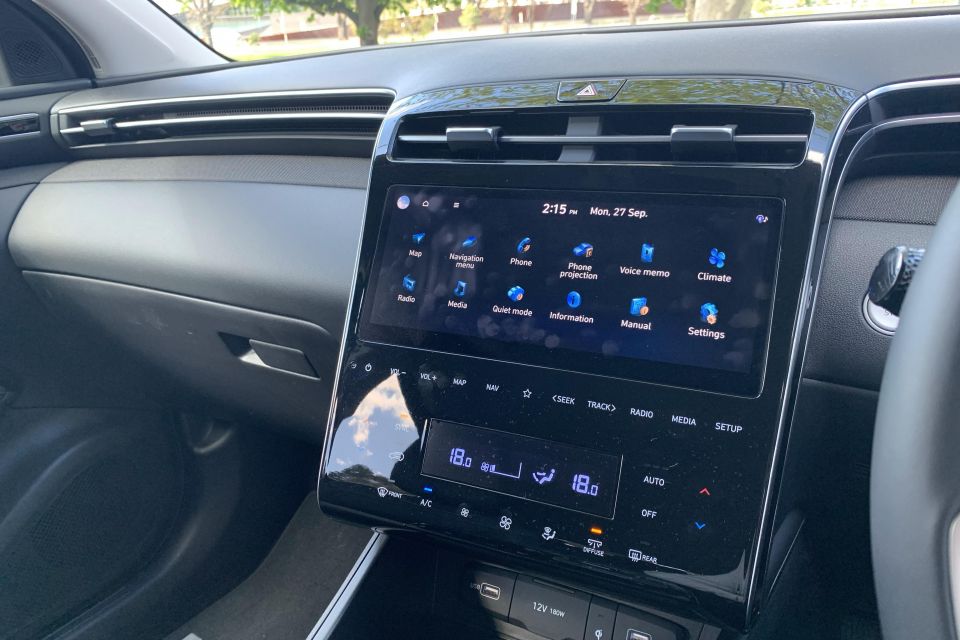
Equipment highlights for the Tucson Elite include:
That’s on top of the base Tucson specification, which includes:

Opting for the available N Line package ($2000 on the Elite) brings:
While it’s a healthy amount of spec, there’s still a number of headline features not fitted to the mid-spec model reserved for either the N Line option pack, or the flagship Highlander, including:
The above is largely expected at the price point, particularly the headlights, tail lights and rear-view mirror, which just seems a little stingy.

The Hyundai Tucson line-up recently received a five-star ANCAP safety rating based on tests carried out by Euro NCAP on the short-wheelbase model available in Europe.
It received an adult occupant protection score of 86 per cent, a child occupant protection score of 87 per cent, a vulnerable road user protection score of 66 per cent, and a safety assist score of 70 per cent
All Tucson models come equipped with the company’s SmartSense active safety suite which includes:
There’s also seven airbags (dual front, front side and side curtain + front-centre) and tyre pressure monitoring across the range, while Elite variants and above score front and rear parking sensors (base gets rear only).
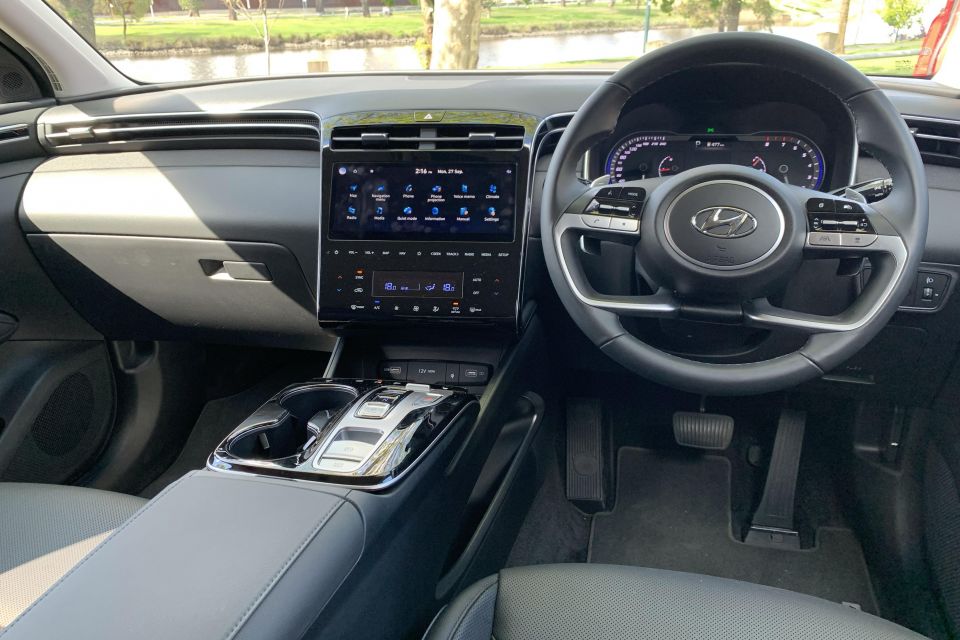
The exterior is already a wild departure from Tucsons past, and the interior has undergone just as much of an overhaul as Hyundai continues to strive for a more premium image.
In mid-spec Elite trim, the Tucson presents like an upmarket product. The central infotainment display is typically Hyundai/Kia slick with high resolution and snappy response, while the overall mix of materials and textures is right up there with the best in the segment.
Where the old model was feeling a bit behind the times, this new one is giving me ‘car of the future’ vibes – living up to the brand’s marketing slogan.
All the touch points, from the creamy leather steering wheel and padded centre armrest, to the centre stack design all make you feel like you’re sitting in a vehicle more expensive than it is, and that’s a theme we’ve seen a lot of recently from Hyundai and Kia’s higher-end products.
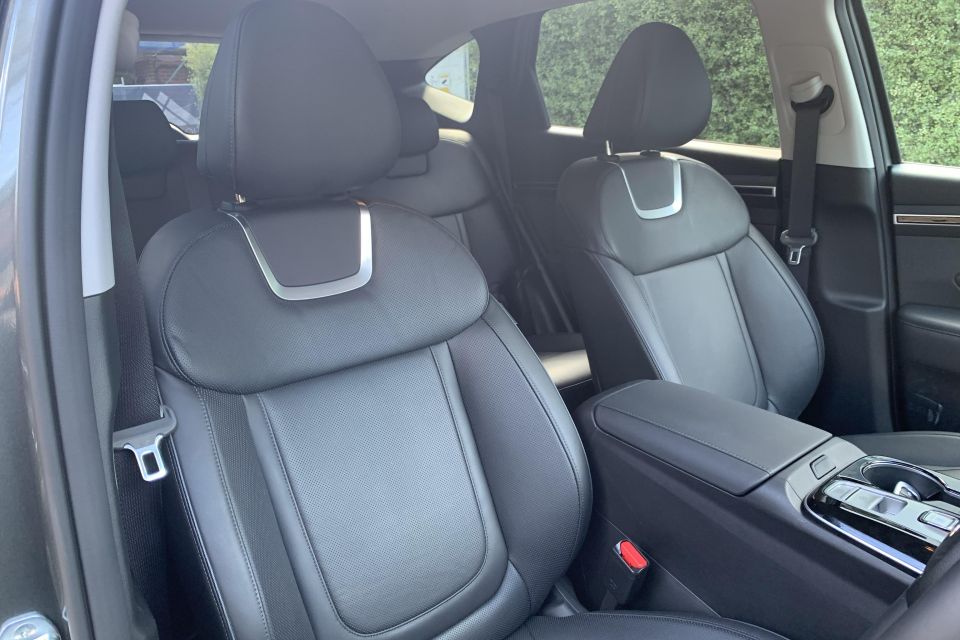
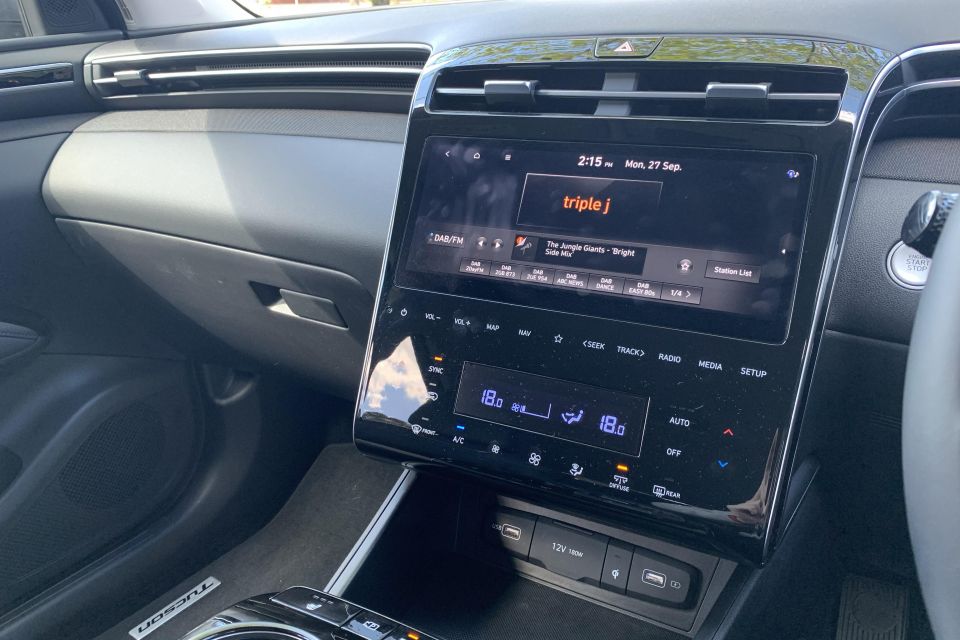
The new ‘waterfall’ centre stack looks funky, and the touch-based controls look new-age. That said, as we’ve found with most touch capacitive controls, they can be a little fiddly to use if you’re operating on the move and the gloss black surface is quite prone to fingerprints.
Comfort and space up front is top notch, though. The front chairs are cushy but supportive, with a wide range of adjustment and good bolstering to ensure your thighs and lower back are well supported over longer stints.
Storage is pretty good too, with a large centre storage bin under the padded armrest, two large cupholders, a large cubby under the centre stack that can store large phones and other items, though the skinny door pockets are a minor complaint as there’s nowhere to store larger bottles.
My colleague Scott Collie recently complained that the analogue dials in base and Elite grades are “criminally ugly”, and while I may not feel as strongly, they aren’t the most attractive or modern-looking instruments you’ll find.
Given Hyundai is marketing the Tucson as a vehicle that offers “futuristic luxury”, reserving the swish digital instruments for the top-spec Highlander or relegating it to the N Line option pack for lower grades seems a bit counter-productive. Just make the virtual cluster standard, please.
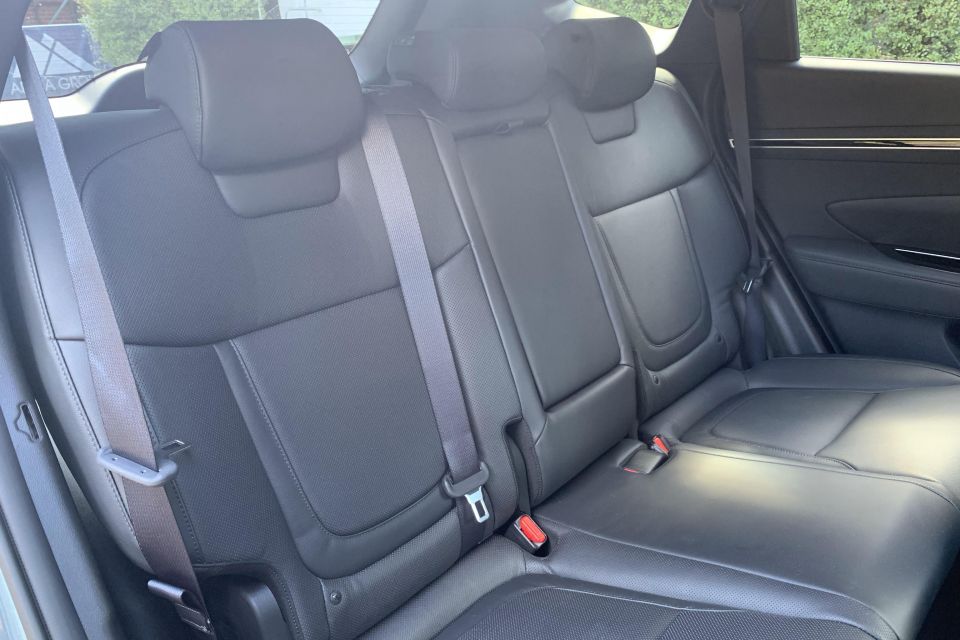
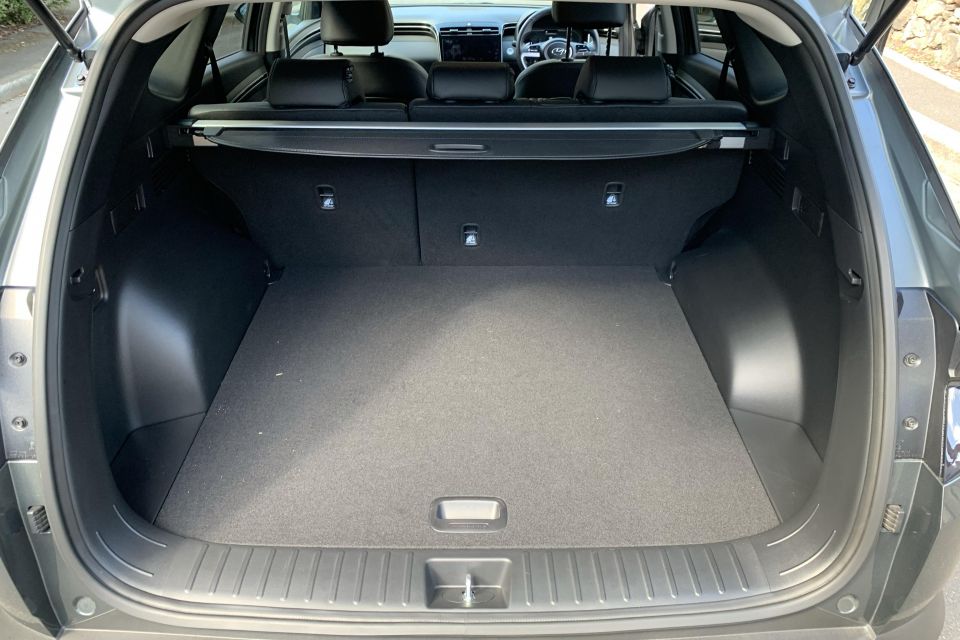
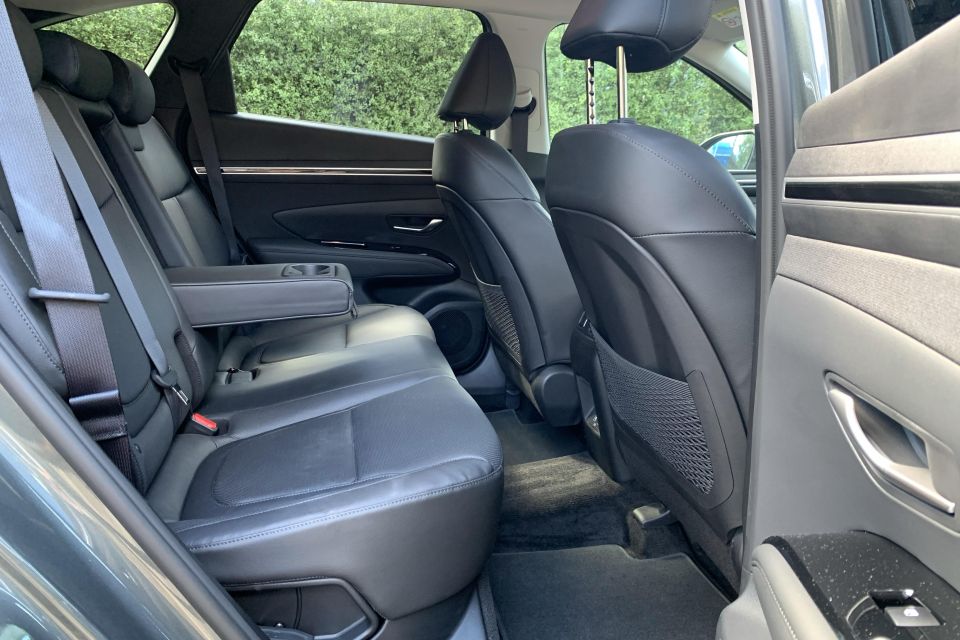
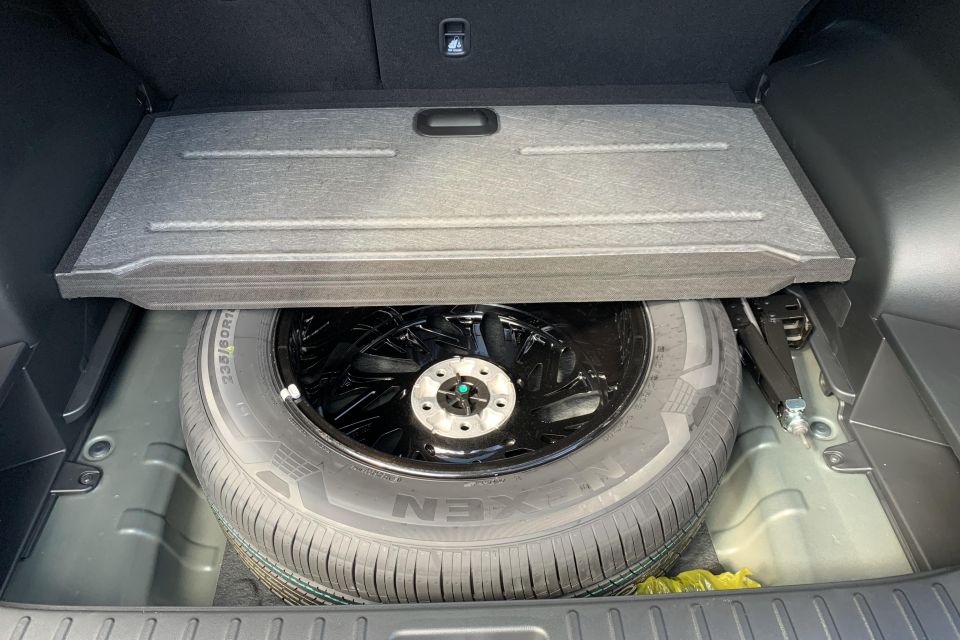
In the second row the Tucson’s significantly increased proportions have paid dividends, with acres of room even for taller passengers behind taller drivers. The Hyundai has gone from one of the smaller entrants in the segment to the largest, and no doubt that will appeal to growing families that want to accommodate pre-teens fast-approaching adult proportions.
There’s rear air vents but no separate climate controls, two USB charge ports, as well as map pockets, bottle holders in the doors and a fold-down centre armrest with cupholders. ISOFIX mounts on the outboard seats also mean the youngest of family members are catered for.
For maximum comfort you can recline the rear seatbacks, but they don’t slide like they do in a Volkswagen Tiguan.
The boot area holds 539L with the rear seats up, and 1860L with them folded. It’s up there with the best in class, and the area itself is deep with a pretty flat boot floor. There’s a full-size alloy spare under the floor, which is becoming a rarity.

The 1.6T versions of the Tucson run a 1.6-litre turbocharged four-cylinder petrol engine as the naming suggests, with outputs rated at 132kW (5500rpm) and 265Nm (1500-4500rpm).
Drive is sent to a front-biased on-demand all-wheel drive system via a standard seven-speed dual-clutch transmission with paddle shifters. Opting for the turbo brings 17kW and 73Nm over the base 2.0-litre petrol, with both peak power and peak torque arriving earlier in the rev range.
While the T-GDi motor seems unchanged on paper, the new-generation Tucson has ushered in the brand’s latest Smartstream engine technologies, which boost performance and efficiency.
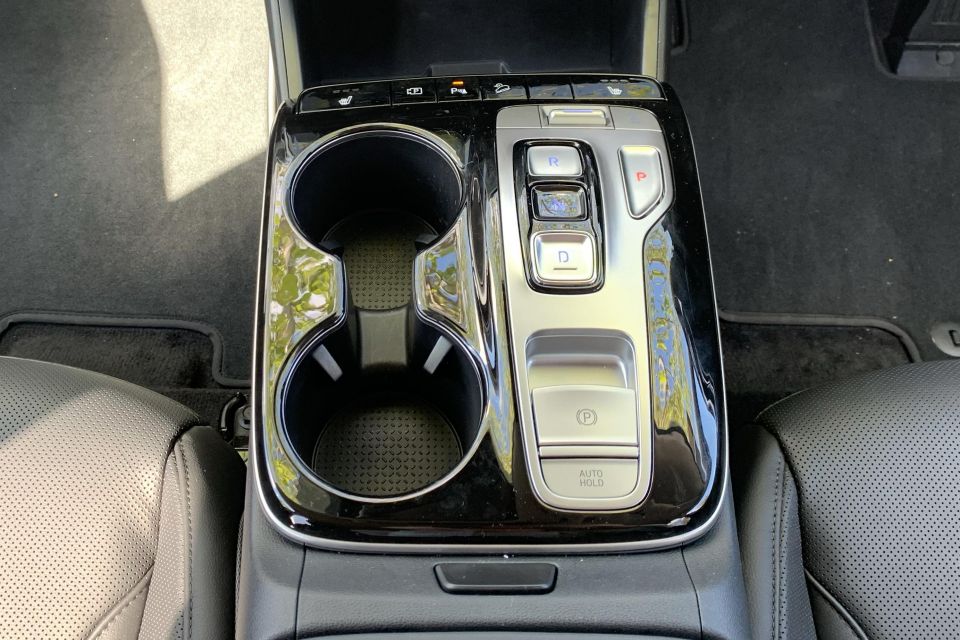
In the case of the 1.6 T-GDi, it gets Continuously Variable Valve Duration (CVVD), which regulates the duration of valve opening and closing according to drive conditions to cut fuel use and improve engine response.
When this technology was first revealed in 2019, Hyundai claimed the new engine cut fuel use by 5.0 per cent and emissions by 12.0 per cent, while achieving a performance boost of 4.0 per cent.
That’s somewhat reflected in the fuel claim, at 7.2L/100km on the combined cycle, which is 0.5L/100km less than the smaller and marginally lighter previous-generation model. Australian models don’t feature idle stop/start technology, however.
If you’re looking to tow, petrol versions of the Tucson quote a maximum 1650kg braked towing capacity with a max towball weight of 100kg. Opting for the diesel ups that to 1900kg and the available Hyundai Genuine Load Assist Kit can handle a towball weight up to 160kg.
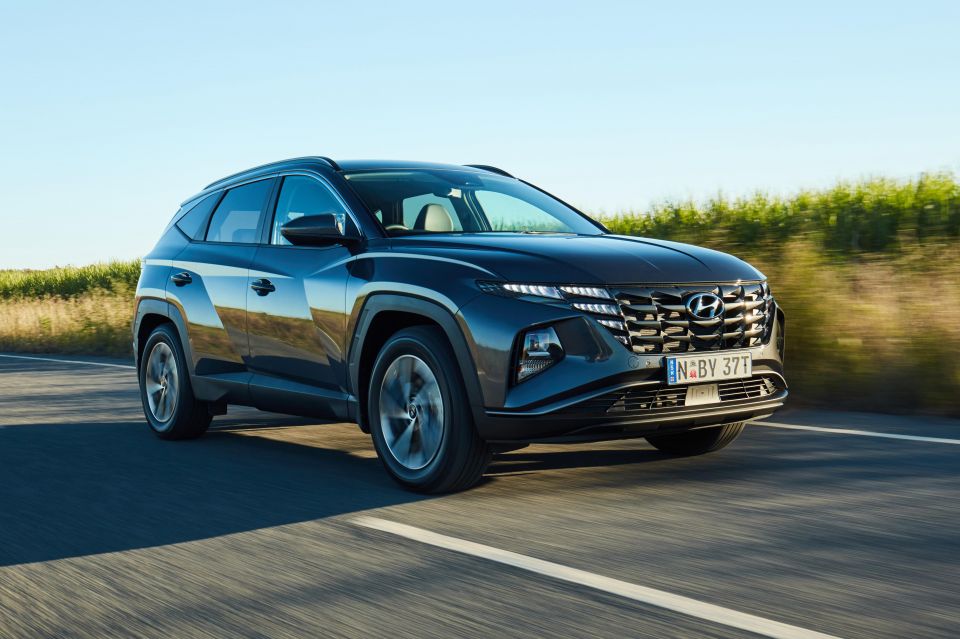
This was my first experience driving any Tucson with the turbocharged petrol four, and I was a little underwhelmed.
Weighing in at 1656kg (tare), the turbocharged Tucson is more effortless than punchy in terms of performance, and doesn’t feel as eager to get going as smaller Hyundai Motor Group models with this engine such as the Kona and Kia Seltos.
Peak torque comes in nice and early so there’s good low-down shove, but the seven-speed DCT can be a little slow off the line and is pretty eager to shift up in the pursuit of efficiency. Long story short, it’s not exactly ‘sporty’.
There were times I felt vibrations through the pedals and steering wheel as the transmission found its friction point, which left me feeling that an extra layer of polish is required to smooth things out.
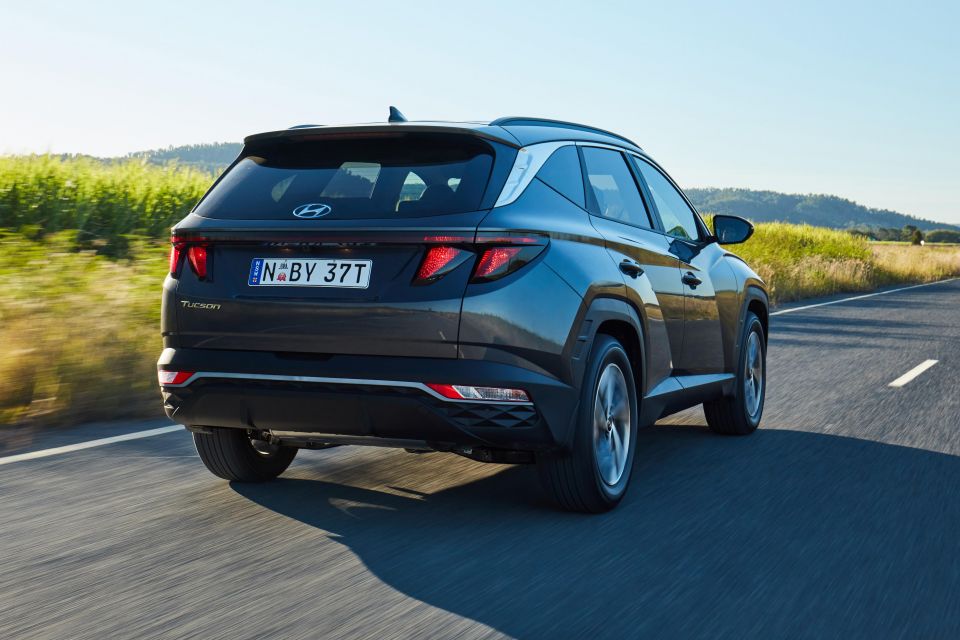
It’s otherwise a decent drivetrain and certainly a better performer than the cheaper atmo petrol, but in urban environments between 60-80km/h you aren’t going to notice the difference unless you really put your foot down.
Personally, I think the punchier 2.0-litre turbo-diesel, with 137kW and 416Nm as well as an eight-speed conventional automatic, is still the pick of the line-up for overall performance and driving refinement.
Beyond the powertrain, the Tucson Elite maintains the positive qualities myself and my colleagues have observed in our numerous assessments.
The cabin is nicely insulated from the outside world, the new platform from the larger Santa Fe brings a big-car feel to a more compact package, and the driver controls are light and fluid without lacking too much in feedback.
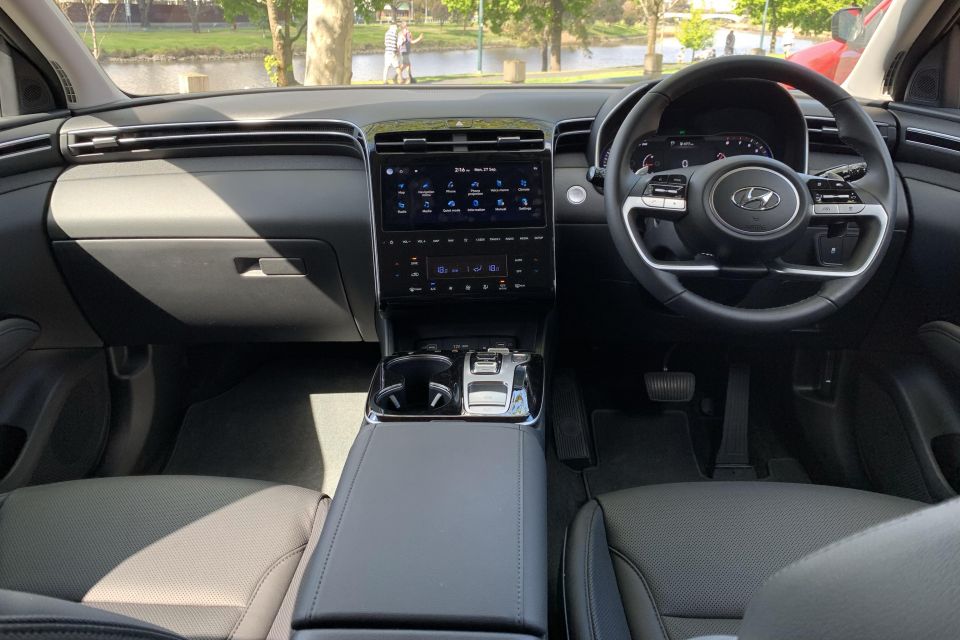
Where expert car reviews meet expert car buying – CarExpert gives you trusted advice, personalised service and real savings on your next new car.
I’m a fan of relatively neutral dynamics for this kind of vehicle. Unlike recent iterations, the latest Tucson does without an Australia-specific chassis tune, rather a global tune that has been vigorously tested by the local division.
There’s plenty of active safety and assistance technologies helping you stay on the straight and narrow too, and like we’ve found in Hyundai and Kia vehicles of late they’re generally well-calibrated and helpful in real-world use.
Standard blind-spot and rear cross-traffic assists are good range-wide additions, though the added visibility from the Highlander’s Blind Spot View Monitor would be a good point of difference. The lane-keep and lane centring assists, likewise, do what they say on the tin without being overly intrusive – though the feel of the latter won’t be to all tastes.
Adaptive cruise control with stop/go and Lane Tracing Assist also combine to make the Tucson essentially semi-autonomous on the freeway which can take the strain off longer stints behind the wheel too.
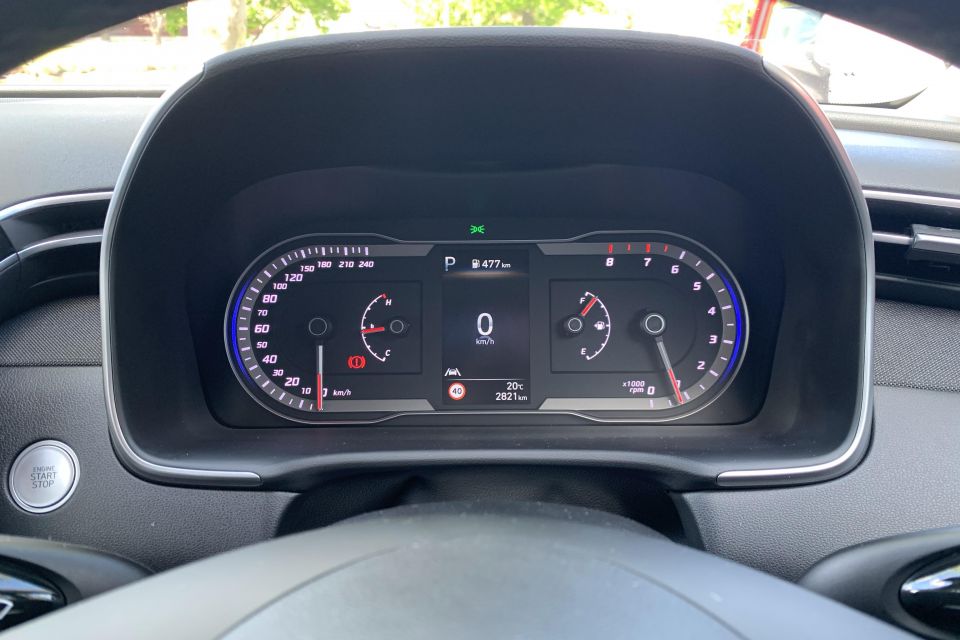
Hyundai covers the Tucson with a five-year, unlimited-kilometre warranty.
Under its capped-price servicing scheme, the first five services are capped at $319 each. Hyundai also offers pre-paid servicing plans which bundle in the first three, four or five years of maintenance – costing $957, $1276 and $1595 respectively which works out to $319 per year anyway.
Service intervals are a little short at 12 months or 10,000km for 1.6 T-GDi versions of the Tucson. The 2.0 MPi petrol and 2.0 CRDi diesel engines offer 15,000km intervals.
In terms of real-world fuel consumption, we saw an indicated 8.9L/100km in mixed driving favouring urban commuting, a little up on Hyundai’s 7.2L/100km combined claim but line-ball with the 8.8L/100km urban figure.
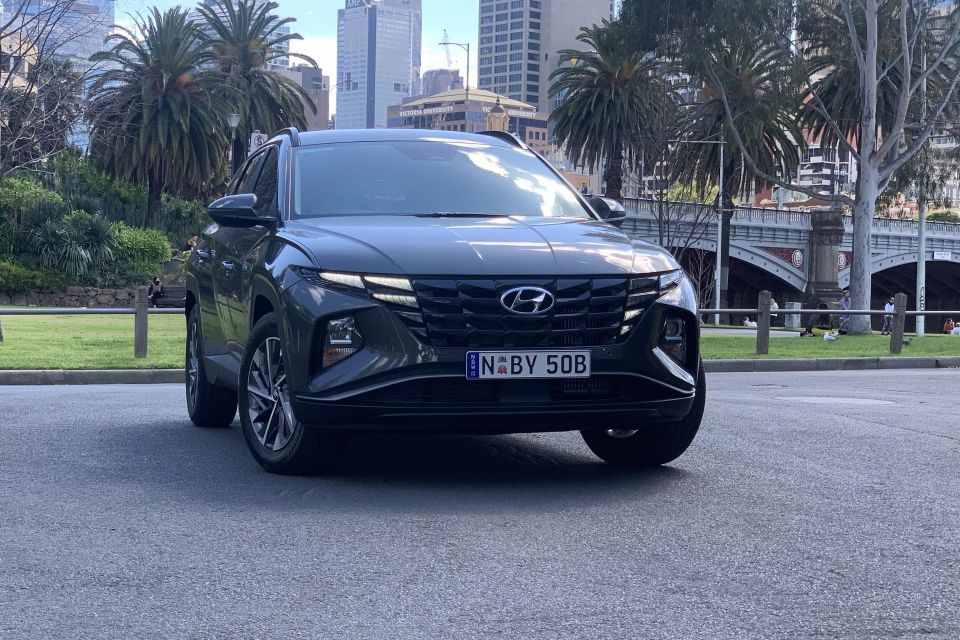
The ‘Turbo Tucson’ certainly gives the family SUV a welcome boost in performance over the base atmo petrol, but don’t expect it to put the ‘sport’ in Sports Utility Vehicle.
In Elite 1.6T AWD specification, the Tucson is arguably the value pick of the range balancing features and performance, though I’d be ticking the N Line box for any version that isn’t a Highlander.
The added equipment – like LED lighting and 10.25-inch digital instrument cluster – go a long way to making the Tucson look and feel more expensive, not to mention the N Line bodykit, alloys and sportier interior trimmings.
Fundamentally, though, the latest Tucson is a good thing. It’s well-built, spacious, and drives in such a quiet and refined manner some of the premium brands should be a little nervous. Hyundai’s infotainment is excellent as expected, and the futuristic looks inside and out is sure to standout from some of the more mundane SUV designs.
Here’s hoping Hyundai Australia manages to make a case for the Tucson Hybrid, which pairs the 1.6T engine here with an electric motor and battery pack for even better performance and efficiency. In the meantime, the 2.0-litre diesel remains the pick of the range if you don’t spend all your time in the city.
Where expert car reviews meet expert car buying – CarExpert gives you trusted advice, personalised service and real savings on your next new car.
James is an automotive journalist based in Melbourne, Australia. Before joining CarExpert.com.au in 2020, James has worked at leading auto media outlets including Carsales and CarAdvice, as well as at Pulse agency for Ford Australia's communications team. In 2019 James made Mumbrella's 'Top 20 most prolific web authors in Australia' list after publishing 1,360 articles between March 1, 2018 and February 28, 2019 for CarAdvice. James is also an Ambassador for Drive Against Depression – an Australian charity whose mission is to support mental wellness through the freedom of driving and a shared love of cars.


Andrew Maclean
14 Days Ago


James Wong
11 Days Ago


Max Davies
9 Days Ago


Paul Maric
7 Days Ago


Max Davies
5 Days Ago


James Wong
3 Days Ago